The conflict that pitted brother against brother has left a lasting legacy on America’s identity, propelling industrialization and ending slavery while influencing art, music and literature—an outlet that allowed individuals to express the horrors of war during their fight for liberty.
With around 620,000 soldiers killed and millions more injured, the Civil War is the deadliest military conflict in American history. It was an atrocious, long four years, from the first fallen soldiers of Fort Sumter in 1861 to the end of the war in 1865, after Confederate General Robert E. Lee signed a ceasefire agreement securing Union victory.
Although this signified the end of government-sanctioned cruelty, it unfortunately did not ensure peace, as widespread violence, intimidation tactics and resistance to Reconstruction persisted. The effects of the Civil War continue to negatively impact race relations due to lasting discrimination that permeates every aspect of society, exposing itself through the inequality that is exhibited through our education, employment, housing and criminal justice systems.
This undoubtedly dark period of America’s history remains pertinent and, therefore, an important topic on which to educate ourselves. Along with nonfiction accounts that give us the facts of the era, readers can also pick up Civil War novels, since historical fiction give us a rare opportunity to fully immerse ourselves in intimate first-person perspectives from various characters, enabling us to understand differences in ideology and empathize on a far deeper level as we feel like we are right beside the characters during every single one of their struggles and victories.
Authors use their artistry to engage readers’ senses, so we feel the sun beating down on the weary soldiers' backs and smell the sharp metallic odor of gunfire permeating the air. It’s why, when a young soldier takes his last breath on the battlefield, we shed tears right alongside his fellow troop members, since we too have just lost a close friend. Civil War novels, like the ones on this list, capture every aspect of war. Not only the fear, anxiety, and tragedy, but the camaraderie and reconciliation that clawed their way out of the rubble.
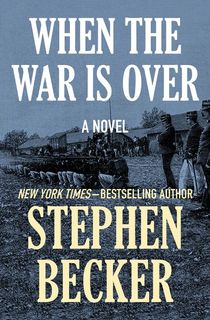
When the War Is Over
Lt. Marius Catto leads a platoon of Union army soldiers across a Kentucky meadow one fateful September morning in 1864. Before he can run for cover, a young man takes aim and manages to shoot Marius in the shoulder. The 16-year-old orphan, Thomas Martin, asserts that he is a Confederate soldier, though he appears barefoot and bears no uniform. Once taken prisoner, Thomas is court-martialed as a guerilla and sentenced to death by firing squad. Who is Thomas’s sole supporter? The man he tried to kill.
Based on true events, this poignant story explores the meaning of loyalty, empathy and the injustices of war during the final days of the Civil War.
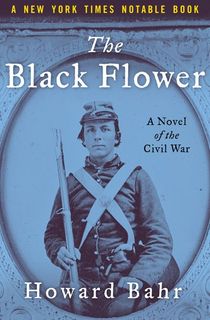
The Black Flower
Winner of the William Boyd Award for Best Military Novel, this thoroughly researched, haunting Civil War account plays out over the course of a few days in November 1864 during the Battle of Franklin. Among General John Bell Hood’s Army of Tennessee are three Confederate soldiers who are lifelong friends, one of whom has now sustained a severe wound—Private Bushrod Carter, a 26-year-old who has stayed alive through three years of horrendous battles.
Bushrod is whisked away to a makeshift hospital, where he meets Southern Belle Anna Hereford, a guest on her cousin’s plantation who is suddenly forced to face the horrors of war up close as she tries to tend to the wounded and finds herself drawn to our protagonist. This is a novel that depicts war’s relentless suffering, explores the intricate layers of loss and brilliantly conveys how people rely on one another to endure unthinkable amounts of pain.
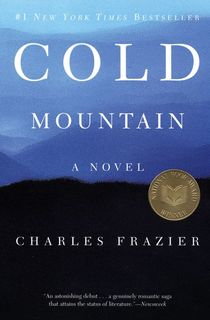
Cold Mountain
Inspired by local history and personal stories passed down by author Charles Frazier’s own family, Cold Mountain is lauded as a modern-day Odyssey. Readers follow a disillusioned, wounded Confederate soldier named Inman, who abandons his post to head back home to North Carolina. He hopes to reunite there with his beloved Ada, who, unbeknownst to her lover, has gone through a vast transformation.
Spurred by the need to provide for herself after her father dies, Ada must learn how to successfully sustain a farm, having never been taught since she was sheltered throughout her life. With rich descriptive prose of Inman’s journey through the decimated South, detailed historical accuracy and compelling characters whose authentic voices make them feel truly alive, Charles Frazier weaves an unforgettable Civil War novel of survival, loss and self-discovery.

Call Each River Jordan
Those who enjoy historical mysteries will appreciate this suspenseful Civil War story that centers around Union Major Abel Jones, a Welsh immigrant and veteran who is called upon by the Lincoln administration to investigate the massacre of 40 runaway slaves. Both warring sides will be affected if the newspapers publish the story before those responsible are caught, so Abel Jones must travel across enemy lines to bring justice to the victims and prevent the atrocity from being exploited by either side.
This deeply evocative novel may be difficult to read as it doesn’t hold back while depicting the ugliness of war and the heinous atrocities spurred by racial prejudice, but it’s a necessary one that allows us to have a deeper understanding of this devastating period.
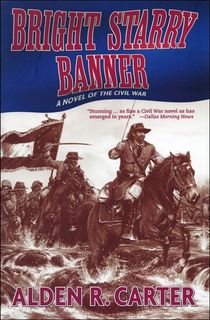
Bright Starry Banner
Author Alden R. Carter succeeds in presenting a historically detailed account of one of the major—but often overlooked—battles of the Civil War: The Battle of Stones River. Carter captures the desperation of the downtrodden soldiers, exploring both the perspectives of men fighting for the Confederacy and the Union, creating a compelling piece of work that humanizes those often glossed over in history textbooks.
From December 31, 1862, to January 2, 1863, Major General William Starke Rosecrans’s Army of the Cumberland had to face the Confederate soldiers of General Braxton Bragg’s Army of Tennessee. With the public starting to doubt President Lincoln’s plan and European countries threatening to support the Confederacy, Rosecrans’s army felt extra pressure to win this pivotal battle that appeared to be the North’s last hope. This riveting tale skillfully explores the dichotomy of good versus evil through its well-developed characters, who make the depiction of bloodshed all the more bitter.
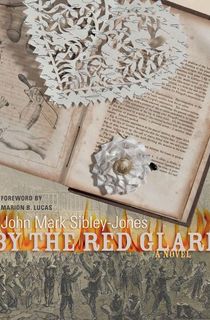
By the Red Glare
The ambitious novel By the Red Glare allows readers to learn about General William Tecumseh Sherman’s advancement on Columbia, South Carolina, where his army left this capital city—a symbol of rebellion from which the Civil War began—completely decimated. Readers get the opportunity to see into the lives of those living in the city, including a look into a Columbia hospital with wounded men from both sides of the conflict and an asylum that houses hundreds of prisoners looking for an opportunity to flee.
The story keeps readers captivated with its vivid storytelling and fascinating characters that range from a runaway slave to a vehement secessionist to a hospital steward who is concerned due to his constantly fluctuating allegiances. The historic burning of Columbia in all its violence and destruction is illustrated with the utmost care by an author who holds no romanticized notions of combat and rather shows war’s true dreadful nature.

The Killer Angels
The inspiration for the 1993 film Gettysburg, this Pulitzer Prize-winning novel transports readers to the Battle of Gettysburg through its meticulously detailed rendering of what is known as the bloodiest battleground of the entire Civil War. It allows readers to bear witness to the innermost thoughts of those fighting for their lives and their fervent principles. We get alternating perspectives, including Confederate General Robert E. Lee as well as Union General Joshua Lawrence Chamberlain, among many others who were at the forefront of the conflict.
Although considered a stunning masterpiece for various reasons, including its incredible imagery, unique writing style and excellent narrative pacing, its ability to express the value of bonds between people by highlighting the friendships gained and lost during wartime is especially remarkable.
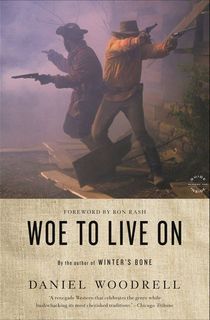
Woe to Live On
One of the many travesties of the Civil War was the way friends and family members were often torn apart due to their differing political views. Often forced to pick a side, no one could remain neutral during this period of upheaval in America. Especially precarious was the relationship between the border states of Kansas and Missouri. Woe to Live On tells the story of the First Kansas Irregulars, a group of young men also known as Bushwhackers—guerilla units loyal to the Confederacy—who search the countryside for opportunities to fight allies of the Union known as the Jayhawkers.
Readers follow German-American Jake Roedel, a recent recruit of the First Kansas Irregulars who, despite being unsure of his feelings concerning the larger issues of the war, is eager to prove himself among his fellow men and avenge his loved ones whom the Jayhawkers have targeted. As he engages in various acts of cruelty and witnesses the never-ending “eye for an eye” mentality, he begins doubting his glorified perception of war.
Inspiring the 1999 Western film Ride With the Devil, author Daniel Woodrell’s story is a brutal coming-of-age tale that depicts a young man learning about loyalty, friendship and love who eventually must decide the kind of life he wants to lead: one centered around revenge or one in pursuit of peace.
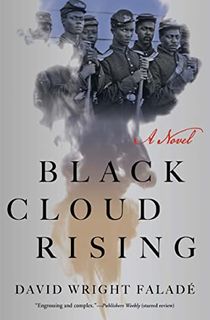
Black Cloud Rising
Black Cloud Rising describes the complex reality of the soldiers from the African Brigade—a unit composed of recently freed slaves and runaways who were tasked with killing rebel guerillas and raiding plantations to free the enslaved. Readers are provided an in-depth look into Sergeant Richard Etheridge’s perspective—a man who played a pivotal role in Civil War history.
As the son of a slave and her white slave owner, Richard Etheridge had more privilege than most Black children growing up, although he was never treated as an equal to his white half-siblings and was constantly reminded of his supposed inferiority. The novel follows Richard Etheridge’s journey of joining the Union’s cause, which he hopes will allow him to prove his worthiness as a soldier and give him the ability to help free those he loves, like Fanny, the woman he cares deeply about but was forced to leave behind.
At the same time, he struggles to reconcile his feelings toward his father and the half-siblings he grew up with. This powerful story offers the necessary nuance to authentically capture Richard Etheridge’s life while reflecting on themes of family, power and freedom.
This post is sponsored by Open Road Media. Thank you for supporting our partners, who make it possible for The Archive to continue publishing the history stories you love.

